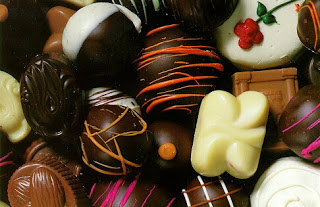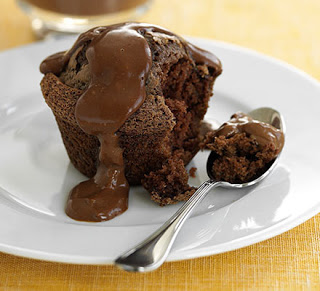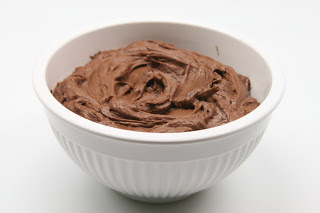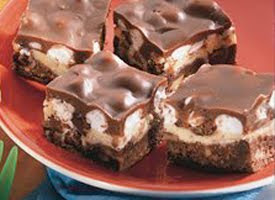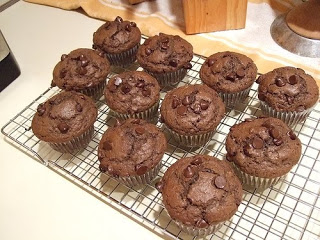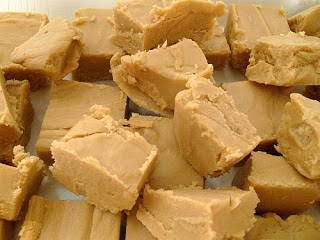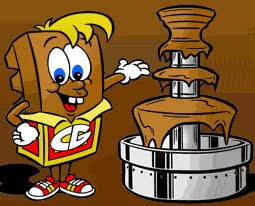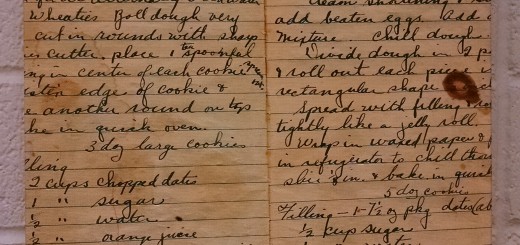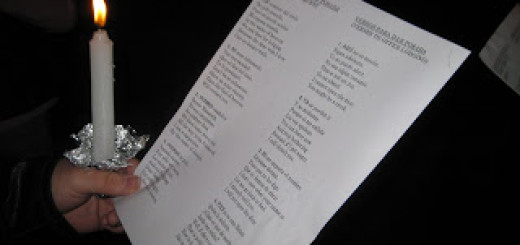HOORAY FOR CHOCOLATE!
3 MINUTE CHOCOLATE MUG CAKE!
4 tablespoons flour (that’s plain flour, not self-rising)
4 tablespoons sugar
2 tablespoons baking cocoa
1 egg
3 tablespoons milk
3 tablespoons oil
3 tablespoons chocolate chips (optional) mini chips would be the best
Small splash of vanilla
Add dry ingredients to mug, and mix well. Add the egg and mix thoroughly. Pour in the milk and oil and mix well.
Add the chocolate chips (if using) and vanilla, and mix again. Put your mug in the microwave and cook for 3 minutes at 1000 watts (a Bit less time if your microwave is stronger). The cake will rise over The top of the mug, but don’t be alarmed! Allow to cool a little, and tip out onto a plate if desired.
AZTEC CHOCOLATE BARK RECIPE
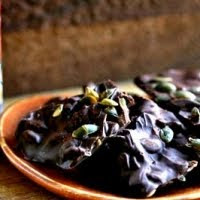
Chocolate was brought to Europe by the conquistadores, who were introduced to it by the Aztecs in what is now modern day Mexico. Prized by the Aztecs, the cacao was ground into a drink and flavored with chili, cinnamon, and honey. “Xocolatl” was often served during important ceremonies and was thought to improve one’s stamina and help fight fatigue.
While not an exact recipe, the flavor echoes from those earlier and exotic times. This chocolate bark is studded with toasted pumpkin seeds, ancho chili, cinnamon, and cayenne pepper creating a nutty, seasonal, and spicy treat. I suggest using some high quality chocolate to ensure superior bark, and you can usually find hulled pumpkin seeds (also called pepitas) at your local natural foods store or Whole Foods. If you are having troubles finding ancho chili powder, chipotle chili powder could be used in a pinch as well while adding a slightly smoky flavor.
1/2 cup of hulled, unsalted pumpkin seeds
3/4 teaspoon of cinnamon, plus a dash extra
3/4 teaspoon of ancho chili powder, plus a dash extra
12 oz. of bitter or semi-sweet chocolate
covered pretzels
sprinkles into separate bowls. Chopped candies, mini chocolate chips, m&ms, peppermints, Dip pretzel one at a
time in melted almond bark. Remove excess chocolate by tapping on side of bowl.
Immediately sprinkle topping, over bowl of chosen sprinkles. Set on parchment paper. Decorate additionally
with more melted chocolate.
10 ounces semi-sweet chocolate, cut into pieces
2 tbsp butter, softened
1 tbsp vanilla
2 tbsp sugar
2 egg yolks
3/4 cup light cream
(Famous? Then how come I’ve never heard of it?)
1 1/2 cups granulated sugar
2/3 cup (5 fl.-oz. can) Evaporated Milk
2 tablespoons butter or margarine
1/4 teaspoon salt
2 cups miniature marshmallows
1 3/4 cups (11.5 oz. pkg.) Milk Chocolate Chips
1/2 cup chopped pecans or walnuts
1 teaspoon vanilla extract
LINE 8-inch-square baking pan with foil.
COMBINE sugar, evaporated milk, butter and salt in medium, heavy-duty saucepan. Bring to a full-rolling boil over medium heat, stirring constantly. Boil, stirring constantly, for 4 to 5 minutes. Remove from heat.
STIR in marshmallows, morsels, nuts and vanilla extract. Stir vigorously for 1 minute or until marshmallows are completely melted. Pour into prepared pan; refrigerate for 2 hours or until firm. Lift from pan; remove foil. Cut into 48 pieces.
HINT: For thicker fudge, use a 9 x 5-inch loaf pan; refrigerate for 3 hours.
Foolproof Chocolate Fudge
8 oz. Semi-Sweet Chocolate Baking Bar, broken into small pieces
2/3 cup Sweetened Condensed Milk
1/2 cup chopped nuts (optional)
3/4 teaspoon vanilla extract
LINE 8 x 4- or 9 x 5-inch loaf pan with foil.
MICROWAVE broken baking bars and sweetened condensed milk in medium, uncovered, microwave-safe bowl on HIGH (100%) power for 1 minute; STIR. If pieces retain some of their original shape, microwave at additional 10- to 15-second intervals, stirring just until smooth.
STIR in nuts and vanilla extract. Spread into prepared loaf pan. Refrigerate for 2 hours or until firm. Lift from pan; remove foil. Cut into 24 pieces.
FOR ROCKY ROAD FUDGE:
NOTE: Recipes can easily doubled. For the sweetened condensed milk, use 1 can (14 oz.). Fudge can be spread into foil-lined 8- or 9-inch baking pan.
8 oz. 70-percent bittersweet chocolate
3/4 cup plus 2 tablespoons granulated sugar
1/4 teaspoon salt
1 1/2 teaspoon ground cinnamon
2 large eggs
1/3 cup all-purpose flour
1/2 cup mini semi sweet chocolate chips
1 1/2 cups pecans
(it’s secret, so don’t tell anyone.)
4 C. sugar
1 1/3 C. canned milk
20 large marshmallows
2 tsp. vanilla
1 C. margarine
1 12-oz. pkg. of semi-sweet chocolate chips
In a large saucepan, cook sugar, milk, and marshmallows on medium-high heat, stirring constantly. When mixture comes to a rolling boil, set timer for 10 minutes (12 for high altitude) and continue to stir constantly. If the mixture starts to burn, slightly reduce the heat. After cooking, remove from heat and add vanilla. Place margarine and chocolate chips in a large mixing bowl. Pour the hot marshmallow mixture over the margarine and chocolate chips, and beat for 5 minutes. Spread into a lightly greased 9 x 1 3-inch pan. Let cool. Makes 35-40 pieces of fudge.
Variations: You can use milk chocolate, butterscotch, or peanut butter chips instead of semi-sweet chocolate chips. Mini marshmallows, nuts, or coconut may be added to the mixture right before spreading it in the pan.
2/3 cup (5 fl.-oz. can) Evaporated Milk
2 tablespoons butter or margarine
1/4 teaspoon salt
2 cups miniature marshmallows
1 1/2 cups (9 oz.) Semi-Sweet Chocolate Chips
1/2 cup chopped pecans or walnuts (optional)
1 teaspoon vanilla extract
LINE 8-inch-square baking pan with foil.
Sugar substitute, evaporated milk, butter and salt in medium, heavy-duty saucepan. Bring to a full rolling boil over medium heat, stirring constantly. Boil, stirring constantly, for 4 to 5 minutes. Remove from heat.
STIR in marshmallows, chips, nuts and vanilla extract. Stir vigorously for 1 minute or until marshmallows are melted. Pour into prepared baking pan; refrigerate for 2 hours or until firm. Lift from pan; remove foil. Cut into 48 pieces.
FOR MILK CHOCOLATE FUDGE:
SUBSTITUTE 1 3/4 cups (11.5-ounce package) Milk Chocolate Chips
2/3 cup (5 fl.-oz. can) Evaporated Milk
2 tablespoons butter or margarine
1/4 teaspoon salt
1 teaspoon vanilla extract
2 cups mini-marshmallows
1/2 cup White Chocolate chips
1 cup (6 oz.) Semi-Sweet Chocolate Chips
LINE 8-inch-square baking pan with foil.
COMBINE sugar, evaporated milk, butter and salt in medium, heavy-duty saucepan. Bring to a full rolling boil over medium heat, stirring constantly. Boil, stirring constantly, for 3 minutes. Remove from heat and stir in vanilla extract and marshmallows. Stir vigorously for 1 minute or until marshmallows are melted.
WORKING FAST, POUR 1/2 cup hot mixture into glass measure. Add white morsels (do not stir); set aside.
WORKING FAST, STIR in semi-sweet morsels into saucepan until morsels are just melted. Pour into prepared pan.
STIR white morsel mixture until morsels are just melted.
DRIZZLE white morsel mixture over semi-sweet chocolate mixture; swirl with knife for marbled effect. Refrigerate for 2 hours or until firm. Lift from pan; remove foil. Cut into 48 pieces.
========================================================
HOORAY FOR CHOCOLATE
A Willie Whale Book
Published by Scholarship Books Inc.
Katonah, New York
from a collection of silly children’s rhymes in a book my brother, Roddy, bought through Scholastic school book orders in 1st grade.
Chocolate pudding,
Chocolate candy,
Chocolate drink, I think is dandy.
Chocolate fudge,
And donuts too,
Covered with thick chocolate goo.
Chocolate cookies, chocolate cake,
In a cone I always take
Chocolate,
Or chocolate chip,
Or chocolate-covered dairy dip.
Boy, oh boy! It would be nice
If only there were Chocolate rice,
Chocolate spinach, stew and fish…
Chocolate in every dish!
===========================================================
CHOCOLATE HEALTH
Two recent studies suggest compounds in natural cocoa have significant health-giving properties.
One study by Prof Norman K. Hollenberg from Harvard Medical School and Brigham and Women’s Hospital in Boston, US was published in the International Journal of Medical Sciences.
Hollenberg spent years studying the effects of cocoa-drinking on the Kuna people in Panama. He suggests that epicatechin, a flavanol found in high levels in natural cocoa, should be classed as a vitamin and is as important as penicillin and anaesthesia in terms of its potential to impact public health.
Although only an observational study, Hollenberg’s results from his work with the Kuna has been described as “so impressive” by Daniel Fabricant, a nutrition expert, that it “may even warrant a rethink of how vitamins are defined”.
Hollenberg and colleagues used death certificates from 2000 to 2004 to look at causes of death between the Kuna who live on the San Blas islands and those on mainland Panama. The Kuna on the mainland do not drink the flavanol-rich cocoa.
They found that the risk of 4 of the 5 most common killer diseases: cancer, diabetes, stroke and heart failure, is reduced to less than 10% in the island-based Kuna people, who drink up to 40 cups of epicatechin-rich cocoa a week.
Fabricant is vice president for scientific affairs at the Natural Products Association. He suggests that: “the link between high epicatechin consumption and a decreased risk of killer disease is so striking, it should be investigated further. It may be that these diseases are the result of epicatechin deficiency.”
The other study, sponsored by Mars Incorporated and conducted in Germany, was published in the Journal of Cardiovascular Pharmacology. It suggests that drinking cocoa rich in flavanols can reverse impairment in the functioning of blood vessels, such as that caused by atherosclerosis.
In this study the participants were male smokers – a group known to have problems with blood vessel function. The participants were given cocoa drinks made with different levels of flavanol: from 28 to 918 milligrams.
In each case, the optimal effect in the blood flow happened after two hours.
179 milligram of flavanols gave a 50 per cent improvement in blood vessel performance, which carried on increasing in proportion to flavanol increase.
The improvement in blood vessel function for the highest level of flavanol, 918 mg, was so great that it was equal to that found in a person with no known cardiovascular risk factors.
They followed this up with a seven day sustained trial, where participants were given three drinks a day, totalling 918 mg, and monitored their blood vessel performance at intervals over the day, and then for a week after they stopped taking the drink.
The researchers said that the blood vessel benefits from consuming the flavanol-rich cocoa for a week was comparable to “long-term drug therapy with statins”.
While the improved performance was sustained while they continued to drink the cocoa, after a week of not drinking it, the blood vessel performance returned to their previous levels.
Commercial cocoa production removes flavanols like epicatechin because they taste bitter. They can also be destroyed by many conventional cocoa and chocolate processing methods. Tea, wine, chocolate and some fruit and vegetable also contain epicatechin.
According to a statement that accompanies an announcement of the second study, Mars has patented methods of processing cocoa beans to keep the naturally occurring flavanols in the cocoa and chocolate.
The statement emphasizes that consumers should be aware that “contrary to repeated reports, the percent cacao or cocoa does not indicate cocoa flavanol content. Only careful handling of the cocoa can help to retain cocoa flavanol content.”
Nutrionists advise members of the public not to take this news as a reason to increase their consumption of chocolate and cocoa.
“Does Flavanol Intake Influence Mortality from Nitric Oxide-Dependent Processes? Ischemic Heart Disease, Stroke, Diabetes Mellitus, and Cancer in Panama.”
Vicente Bayard, Fermina Chamorro, Jorge Motta, Norman K. Hollenberg.
Int. J. Med. Sci. 2007, 4: 53-58.
Click here for Abstract.
“Sustained Increase in Flow-Mediated Dilation After Daily Intake of High-Flavanol Cocoa Drink Over 1 Week. “
Heiss, Christian; Finis, David; Kleinbongard, Petra; Hoffmann, Arne; Rassaf, Tienush; Kelm, Malte; Sies, Helmut.
Journal of Cardiovascular Pharmacology. 49(2):74-80, February 2007
================================================
THE MESO AMERICAN HISTORY BEHIND CHOCOLATE
http://www.fieldmuseum.org/Chocolate/history.html
==========================================================
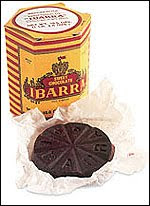
SEARCHING FOR MEXICAN CHOCOLATE?
Look for these brands from your local grocer:
Ibarra
Abuelita
Azteca
Moctezuma
====================================================
MEXICAN CHOCOLATE
Mexican chocolate is a type of chocolate which is prepared with an assortment of spices for a very distinctive and rich flavor. It is available in many markets, especially those which stock basic Mexican foods, and it can be found in the form of bars and discs of solid chocolate, along with powders and syrups. In addition to being used to make hot chocolate, Mexican chocolate can also be used in traditional Mexican dishes like mole, and it can be used in baking for an unusual flavor.
Chocolate has a very long history in Mexico and Central America. The Theobroma cacao plant, which produces the cacao beans used to make chocolate, is native to South America, and archaeological evidence suggests that Mesoamericans made dishes with chocolate for centuries before the arrival of Europeans. Although many people associate chocolate with sweetness today, the original Mexican chocolate was actually rather sour and intense, and it was highly prized. When the Spanish were introduced to chocolate, they brought it back to Europe, popularizing it among the upper classes; for quite some time, hot chocolate drinking was rather trendy.
Typical Mexican chocolate is made with roasted and ground cacao nibs, sugar, and cinnamon. Other spices such as nutmeg and allspice may be added, along with nuts, and chilies are sometimes used as well. Mexican chocolate tends to be rather granular in texture, with a creamy finish from the cocoa butter. The natural sweetness from the sugar makes the addition of extra sweetener unnecessary.
In Mexico, chocolate is often used to make a hot beverage, as it has been used for centuries. Traditional Mexican hot chocolate is foamy; originally, this was accomplished by pouring the drink back and forth between vessels, but today it is foamed with a molinillo, a specially designed whisk. These tools can also be used to foam other drinks to taste. Many people in the United States along the Mexican border have developed a taste for chocolate Mexicano, and it is often available at shops as a result.
==================================================
Mexican Chocolate: A Culinary Evolution
by Karen Hursh Graber
Mexican chocolate refers to either the round, flat disks of cinnamon-scented chocolate found throughout the land, or the foamy drink made from them. This uniquely flavored sweet is popular in many other countries as well, and, along with flan and rompope, one of the more widely known Mexican dessert and beverage offerings.
For centuries, however, this was far from the case. Chocolate, perhaps the most popular of sweet foods, had a long history in Mesoamerica before the Europeans arrived, at which time it was neither sweet nor a food, but a beverage, and a sour one at that. Many years and outside influences were involved in its culinary evolution.
To begin with, the cacao tree, which yields the berries, or “beans”, that are the basis of chocolate, requires the moist heat of the tropics to flourish. Ethnobotanists may argue over whether the very first cacao trees appeared in Mexico, Central or South America, but they do agree that the processing and culinary use of theobroma cacao (“the gods’ food”) was first developed in what is now Mexico.
The word “cacao”, traced back to the Olmec inhabitants of Tabasco, Chiapas, Veracruz, and parts of Central America, was passed on to the lowland Maya, who succeeded them in this territory.
The Classic Maya, who flourished a full eight centuries before the Conquest, placed an obvious importance on chocolate, evident from the highly-adorned chocolate vessels, made of clay, that were entombed with them. Their descendents, who populated the Yucatan and other coastal areas when the Spanish arrived, were still using cacao beverages in rituals such as the wedding ceremony, where the bride and groom drank chocolate from a common goblet.
The use of chocolate as a beverage, a ritual offering, and even as a form of currency, was passed on from the Maya to the inhabitants of central Mexico, a high plateau which is too cool and dry for the cultivation of cacao. Its presence in this part of the country, which predates the Aztecs, was a result of trade with coastal regions. Teotihuacan, site of the great pyramids outside Mexico City, was a center of cacao trade, as was Cacaxtla, in the state of Puebla, where murals depicting Mayan cacao merchants can still be seen. But it was the Aztecs, who later came to dominate central Mexico, who took cacao to new heights of culinary, ritualistic, and monetary significance.
Cacao, for the Aztecs, symbolized the power and glory they attained in making the Valley of Mexico the seat of their vast empire. A yearly tribute of 980 loads of cacao, painstakingly counted out into 24,000 beans per load, provided the chocolate that topped off each of Moctezoma’s banquets, as well as that sold, with the addition of different flavorings, in Tenochtitlan’s many markets. The fact that cacao beans were used as currency, although of the smallest denomination, explains the careful counting. Cacao counterfeiting was not uncommon, with clay or packed earth used to fill the cacao shells.
The real cacao probably took more work to process than did the manufacture of the counterfeit version. The beans had to be fermented, cured and toasted, before being ground on the metate into the powder that was the basis for foamy chocolate drinks, called cacaoatl, Nahuatl for “cacao water.” (The theory that the word chocolate was derived from the sound – “choco, choco”- of the molinillo beating the liquid is unfounded, because such a utensil did not exist in Pre-hispanic Mexico; illustrations from the time show the foam being formed by pouring the beverage from one vessel to another.)
The drink was flavored with a great variety of other ingredients, among them, sesame seeds, anise seeds, vanilla, allspice, ground corn, honey and chiles. At the royal banquets, it was often served flavored with a variety of dried and powdered aromatic flowers. One of these, magnolia mexicana, was said to be a cure for sterility as well as a flavoring for chocolate, and it was this version of the drink that Moctezuma imbibed before visiting his wives.
Chocolate also played a part in the religious lives of the Aztecs, who gave the drink to human offerings, to bless the sacrifice. It is not clear whether they were influenced in this regard by the Maya, but it is known that the Maya sometimes added achiote, a dark red seasoning paste, to chocolate to produce a deep red color, which may indicate that the beverage was used as a substitute for the earlier blood sacrifices.
Although these religious rituals were roundly condemned by the Spaniards, they were quick to pick up on the chocolate habit, possibly because of the effects of the caffeine. Chocolate was the first stimulating beverage to be encountered by the Europeans, coffee and tea being introduced to them a century later. An Italian traveler to sixteenth-century Mexico, who brought chocolate back to Florence, describes the New World Spaniards as being “addicted” to it.
The Spanish royals who married into the French court were responsible for chocolate’s introduction to that country, and soon it was popular with a variety of Europeans, from French nobility to English pirates. The addition of sugar, cinnamon, eggs, almonds and vanilla to make the classic combination known as “Mexican chocolate” has been attributed both to chefs in Spain, and Spanish nuns in Puebla. Whichever is true, we do know that the formation and storage of this flavored chocolate as round tablets, the kind sold commercially today, was begun by the Spanish ladies of colonial Guatemala toward the end of the 1500’s. The recipe for making these tablets from scratch, starting with cacao beans, was published fifty years ago in the United States in a book called Good Food from Mexico which, although in English, was recently found by a friend in the Puebla flea market.
The following recipes all use this same kind of chocolate, sold in supermarkets in the US, Canada and Europe, usually under the brand name Ibarra, produced in Guadalajara, Jalisco, and distributed world-wide. These treats, while possibly not having the aphrodesiac effect of Moctezuma’s brew, are perfect for Valentine’s Day. One year I made an all-chocolate Valentine dinner for my husband, who is very fond of the sweet moles that use this chocolate. Whether or not you decide to serve mole, a dessert made with Mexican chocolate is a fine finish for any meal.
Recipes:
Flan de Chocolate: Chocolate Flan
Crepas con Chocolate: Crepes with Mexican Chocolate Sauce
Sopa de Chocolate: Chocolate Floating Island
http://www.mexconnect.com/articles/2323-mexican-chocolate-a-culinary-evolution
=================================================
Mexican Chocolate: Rustic, Stronger, Better
http://food.theatlantic.com/artisans/mexican-chocolate-rustic-strong-better.php
One of the main differences between the chocolate traditions of Europe and the Americas is their age. The cacao bean, indigenous to South America, entered Europe only with the Spanish in the 1500s, and it wasn’t until the mid-1800s that it was first consumed in bar form. At the time, Europeans applying technology to all sorts of crafts, including chocolate-making. They ended up creating something that, while chocolaty, was very smooth and sweet–completely different from what the American cultures made and continue to make today.
The American tradition of chocolate, in contrast, is documented to have existed for at least two millennia. During this time it has become an integral part of many complex cultural and food traditions.
The stuff in yellow hexagonal boxes you find in most larger grocery stores and Latin-American food stores is to Mexican chocolate what the Nestle bar is to European chocolate. All through Mexico (though more in the southern states), there exist small tiendas de chocolate. These shops buy cocoa beans from farmers or merchants and will roast and grind the beans to order.
Each shop has its own methods and mills for grinding cocoa and will gladly mix in ingredients like vanilla beans, cinnamon, almonds, chiles, and corn meal according to the customer’s preferences. The best chocolate shops in Mexico are closest to the areas where cocoa is cultivated, particularly in the states of Tabasco, Chiapas, and Oaxaca.
Mexican chocolate offers surprising, rustic, explosive flavors. The unique range–which, with all due respect, you just won’t find in a bar of Valrhona–is thanks as much to the high quality of Mexican cacao as to the low-tech method used to turn beans into chocolate. Mexican chocolate is very minimally processed, made quickly and easily without recourse to expensive, computerized equipment.
The beans, after having been fermented on the farm and roasted, are ground in a stone mill called a molino. The ground-up beans (now somewhat confusingly called cocoa liquor) are mixed with ingredients like sugar, vanilla, and cinnamon, then ground again into a paste. And that’s about it. In the tradition of Mexican chocolate, there is no conching (long, thorough mixing), no intensive refining, no addition of cocoa butter. What you end up with is a chocolate that feels and tastes truer to the bean than its velvety counterparts on the other side of the pond.
So why doesn’t Mexican chocolate get its due? Maybe it’s the headstrong flavors that overwhelm people accustomed to meek chocolate. Or perhaps it’s the unapologetic coarseness that accosts an unsuspecting palate for the first time. But these are the qualities I find most appealing. I’ve grown to crave the grainy texture so much that, while most Mexicans consume their chocolate as a drink, I eat it straight out of the bag. This kind of chocolate makes me remember that, for thousands of years, chocolate was a food–not a candy.
=========================================
The history of chocolate – the facts, the myth and the legend.
http://www.best-chocolate-recipes-online.com/historyofchocolate.html
Chocolate history is fascinating – by studying the history of chocolate we have a revealing way of understanding social, colonial, industrial and culinary history over the last three thousand years.
What other ingredient connects the ancient histories of the South American civilisations, with all the chocolate eaters and drinkers on all the continents of the world today? A connection that is made each time we eat or drink chocolate.
The true history of chocolate is one of those histories where fact is stranger than fiction, and takes on the quality of myths and legends.
The origins of chocolate can be traced back at least three thousand years. The first peoples to enjoy the rich sensuousness of chocolate are thought to be the mysterious ancient civilisations of the Olmec and the Maya. These civilisations who lived in the heart of equatorial Central America are responsible for cultivating the trees from which all the chocolate in the world is derived.
What we do know starts with the Olmec people who lived in the area of tropical forests south of Veracruz on the Gulf of Mexico. This locality provided the unique growing conditions needed by the cacao tree. The tree can only grow in tropical areas within 20 degrees of the equator. It cannot grow if it is too high, too cold, or too dry, and it needs shelter from wind and sun. It requires protection from all manner of wild animals and is very susceptible to various diseases and ills if not grown in near perfect conditions.
With the demise of the Olmec, the cacao tree continued to be cultivated by the Maya, who lived in an area from the Yucatan peninsula in Central America to the Chipas, and across to the Pacific coast of Guatemala.
The Maya believed that the cacao tree was a gift to man from the gods. And in their written texts they refer to cacao as god’s food. They carved sacred images of the cacao pods onto their palaces and temples. Exclusively for kings and the male elite, the cacao pod was their symbol for life and fertility, and was used only for sacred occasions and rituals.
The seeds from the pods were dried and roasted and made into a frothy drink. It was a bitter brew, often combined with maize, and flavoured with chilli. The drink was mixed and frothed by pouring from a height from one vessel into another.
It was so revered and culturally important that it was also used as currency. A slave could be bought for one hundred cacao beans, a rabbit for four! It was named the cacahuaquchtl, while no other tree was considered to be worth naming!
Following the fall of the Mayas, the history of chocolate continued with the Toltecs. The myth is that Quetzalcoatl, the Toltec King, believed himself to be the god of the air. His earthly mission was to bring from Eden to man the seeds of the cacao tree and thereby teach mankind how to cultivate crops. Unfortunately, Quetzalcoatl was unpopular, having many social uprisings against him.
He decided to flee his court and head south of the Yucatan, and, legend goes, while he was ill there, he was persuaded to drink a mysterious potion to cure his ill health. Instead, he became even more crazy, took to a raft, and set out to sea, promising that he would return in a preordained year to reclaim his kingdom.
This became Aztec mythology, and astrologers predicted that in 1519 a white-faced king would return to claim his people.
Now this could have been it for the myth of Quetzacoatl. It could have remained just that – a myth. And the history of chocolate could have remained unchanged over hundreds of years.
Instead, it became mixed up with reality to devastating result, when in 1519, in the reign of Montezuma II, a white-faced European named Hernan Cortes landed on the continent. Montezuma thought that the prediction was being fulfilled, and treated the Spanish adventurer as a reincarnation of the returning Toltec King. He gave Cortes gifts of cacao pods and even a whole plantation. But Cortes was only an adventurer and soon the game was up. Montezuma was taken prisoner in his own court, and within three years the whole civilisation lay in tatters; Aztec society had fallen.
Through the shared history of chocolate and man, chocolate had only been used in the small area where it grew, and only as a bitter frothy drink. Chocolate, the food from the gods, had only been drunk by earthly gods, the ruling kings and their priests.
Through out the history of chocolate it has played an important role as an aphrodisiac and health tonic, made by the elite medicine men of the court. It was used as currency, and a source of wisdom and energy highly prized at royal weddings.
It was at the very centre of rituals and economic existence, regarded as the only substance with vitality and life, providing sacred and healing properties to those who owned it and drank it.
This phase of the history of chocolate ended with the demise of Emperor Montezuma II and the Aztec civilisation itself.
=====================================================
History of Hot Chocolate
http://whatscookingamerica.net/Beverage/HotChocolate.htm
There is a difference between hot cocoa and hot chocolate.
The terms are often used interchangeably, but technically they are as different as Milk Chocolate and bittersweet chocolate. Hot cocoa is made from cocoa powder, which is chocolate pressed free of all its richness, meaning the fat of cocoa butter. Hot chocolate is made from chocolate bars melted into cream. It is a rich decadent drink.
The original hot cocoa recipe was a mixture of ground cocoa beans, water, wine, and peppers. It didn’t take long for Spaniards to begin heating the mixture and sweetening it with sugar. After being introduced in England, milk was added to the after dinner treat.
The word chocolate is said to derive from the Mayan word xocoatl; cocoa from the Aztec word cacahuatl.
The Mexican Indian word chocolat comes from a combination of the terms choco (“foam”) and atl (“water”); as early chocolate was only consumed in beverage form.
Chocolate grows on trees, appearing in its raw state as melon-like pods (see photo below) on the 40-60 foot tall trees known botanically as “Theobroma cacao,” which means “food of the gods.” This tropical tree has grown wild in Central America since prehistoric times. It also grows in South America, Africa, and part of Indonesia.
The cacao tree produces a fruit about the size of a small pineapple. Inside the fruit are the tree’s seeds, also known as cocoa beans.
Chocolate has been drunk as a beverage for thousands of years. Archeologists tell us that the Olmecs, the oldest civilization of the Americas (1500-400 BC), were probably the first users of cacao, followed by the Maya, who consumed cacao-based drinks made with beans from their plantations in the Chontalpa region of what is now eastern Tabasco. A drink called ‘chocolatl’ made from roasted cocoa beans, water and a little spice, was their most important use but cocoa beans were also valued as a currency.
Because cocoa beans were valuable, they were given as gifts at ceremonies such as a child’s coming of age and at religious ceremonies. The Maya had very many complicated religious beliefs with many gods. Merchants often traded cocoa beans for other commodities, cloth, jade, and ceremonial feathers.
Maya farmers transported their cocoa beans to market by canoe or in large baskets strapped to their backs, and wealthy merchants, employing porters to carry their wares, ventured as far as Mexico the land of the Aztecs, so introducing them to the much prized cocoa beans.
1502 – Although Christopher Columbus (1451-1506), the first European to taste cocoa in Nicaragua, on his fourth voyage to the New World, returned to Europe with the first cocoa beans. No one knew what to do with them and they were dismissed in favor of other trade goods.
By the time the Spanish invaded Mexico in the 16th century the Aztecs had created a powerful empire: their armies were supreme in Mexico.
1519 – The voyage which led Hernan Cortes (1485-1547), Spanish conquistadores, to discover Mexico and the Aztec civilization began in 1517 when he set sail from Cuba with 11 ships and 600 men, all seeking fame and fortune in the ‘New World’. Landing on the Mexican coast near Veracruz, he decided to make his way to Tenochtitlan to see for himself the famed riches of Emperor Montezuma and the Aztec empire.
It was Montezuma (1466-1520), Emperor of Mexico, who introduced Hernam Cortes to his favourite drink ‘chocolatl’ served in a golden goblet. American historian William Hickling’s History of the Conquest of Mexico (1838) reports that Montezuma: “took no other beverage than the chocolatl, a potation of chocolate, flavored with vanilla and spices, and so prepared as to be reduced to a froth of the consistency of honey, which gradually dissolved in the mouth and was taken cold.”
The fact that Montezuma consumed his “chocolatl” in goblets before entering his harem led to the belief that it was an aphrodisiac. Cortes wrote a letter to Charles V of Spain calling chocolate “The divine drink which builds up resistance & fights fatigue. A cup of this precious drink permits man to walk for a whole day without food.” When Cortes returned to Spain in 1528 he loaded his galleons with cocoa beans and chocolate drink making equipment.
Late 1500s – Introduction of chocolate to Europe. According to the article From Aphrodisiac to Health Food: A Cultural History of Chocolate, by Louis E. Grivetti:
While many recent texts and websites provide readers with a precise year and a specific event whereby chocolate was first introduced to Europe, food historians always debate “firsts” and the so-called “first” arrival of chocolate in Europe is a subject of conjecture to say nothing of myth. Chocolate may have been introduced to Europe via the Spanish court in 1544, when Dominican friars are said to have brought Mayan nobles to meet Prince Philip. I suspect, though, that this oft-cited statement is probably more allegorical than precise. It is correct to say, however, that within a century of the arrival of the Spanish in Mexico, both culinary and medicinal uses of chocolate had spread from Mexico to Spain, France, England, and elsewhere within Western Europe (entering through Spain and Portugal) and probably North America as well (entering through the Spanish settlement at St. Augustine, Florida).
1631 – In 1631, the first recipe for a chocolate drink was published in Spain by Antonio Colmenero de Ledesma, an Andalusian physician, in his book, Curioso tratado de la naturaleza y calidad del chocolate (A Curious Treatise of the Nature and Quality of Chocolate). This was the first work to deal exclusively with chocolate and cacao. Don Antonio is said to have lived for some time in the West Indies. Since he was a doctor, he pays a great deal of attention to the dietary aspects of chocolate and was concerned with the psychological as well as the physical effects of the drink. He says, “Chocolate is healthy. It makes the drinker ‘Fat, and Corpulent, faire and Aimiable’. It was an aphrodisiac. In women it caused fertility but eased delivery, etc., etc.” The ingredients in the recipe were:
“Take one hundred cocoa beans, two chillies, a handful of anise seed and two of vanilla (two pulverized Alexandria roses can be substituted), two drams of cinnamon, one dozen almonds and the same amount of hazelnuts, half a pound of white sugar and enough annatto to give some color. And there you have the king of chocolates.”
1643 – It didn’t take long for Spaniards to begin heating the mixture and sweetening it with sugar. Soon ‘chocolate’ became a fashionable drink enjoyed by the rich in Spain.
As the Spanish royalty intermarried with other European Royalty, cocoa was given as a dowry. In 1643, when the Spanish Princess Maria Theresa (1638-1683)was betrothed to Louis XIV (1638–1715) of France, she gave her fiancé an engagement gift of chocolate, packaged in an elegantly ornate chest. A royal chocolate maker was appointed and chocolate drinking became the rage.
1648 – Thomas Gage (1603-1656), an English Dominican friar and traveler, tried to intervene with the Bishop of Chiapas, Mexico over the congregation drinking chocolate during services. The women were fond of chocolate and turned church services into a coffeehouse. The Bishop tried to end this, and was consequently found dead. Poisoned chocolate was sent to the Bishop and Thomas Gage fled Chiapas. The rumor was that the women, who so hated the Bishop for this restriction, poisoned him with chocolate, hence the proverb “Beware the chocolate of Chiapa.”
Eventually, in 1662, Pope Alexander VII put a final solution to the affair when he declared “Liquidum non frangit jejunum.” Translated it means “Liquids (including chocolate) do not break the fast.”
In his 1656 book, Travels in the New World, Thomas Gage devotes an entire chapter to chocolate and tells how the women of the city of Chiapas, Mexico were excommunicated by the bishop because “they would not give up sipping their cups of chocolate to sustain them during high mass.”
1656 – Chocolate was considered an exotic beverage throughout Europe. The “Queen’s Lane Coffee House on High Street,” Oxford, began serving both coffee and chocolate in 1656 and still serves both beverages today in the 21st century. The Public Advertiser of that day carried this notice:
“In Bishopsgate Street in Queen’s Head Alley, at a Frenchman’s house, is an excellent West Indian drink called chcolate, to be sold, where you may have it ready at any time, and also unmade, at reasonable rates.”
1664 – Samuel Pepys (1663-1703), English Naval Administrator and Member of Parliament, known for his detailed private diary that he kept during 1660–1669. Pepys was known to frequent coffee houses and mentioned them in great detail in his 1661 to 1664 diary. He was said to strongly believing in the restorative powers of chocolate:
“April 24, 1661 – Waked in the morning with my head in a sad taking through the last night’s drink, which I am very sorry for; so rose and went with Mr Creede to drink our morning draught, which he did give me in jocolatte to settle my stomach”
“November 24, 2664. About noon out with Commissioner Pett, and he and I to a Coffee-house, to drink jocolatte, very good; and so by coach to Westminster, being the first day of the Parliament’s meeting.”
1700 – By the 1700s, “Chocolate Houses” were all the rage, as popular as coffee houses. These places were precursors of our present day cafes and bars, and they were frequented by politicians, writers, and socialites.
From the middle of the seventeenth century onwards, chocolate also enjoyed great success in Great Britain, especially after the conquest of Jamaica, which gave the British direct access to cacao production. After chocolate was introduced in England, milk was added to the after dinner treat.
By the end of the 18th century, London’s chocolate houses began to disappear, many of the more fashionable ones becoming smart gentlemen’s clubs.
1785 – Thomas Jefferson was to become a great lover of hot chocolate. In a letter to John Adams in 1785, he wrote:
“The superiority of chocolate, both for health and nourishment, will soon give it the same preference over tea and coffee in America which it has in Spain.”
——————————————————————————–
Chocolate as Medicine:
According to the article From Aphrodisiac to Health Food: A Cultural History of Chocolate, by Louis E. Grivetti:
From the 16th through early 19th century, numerous European travel accounts and medical texts documented the presumed merits and medicinal value of chocolate. . . Presented here is a brief “taste” of these rich chocolate-related passages from selected historical monographs. On inspection, these samples reveal that chocolate products were used to treat a myriad of human disorders:
Francisco Hernández (1577) wrote that pure cacao paste prepared as a beverage treated fever and liver disease. He also mentioned that toasted, ground cacao beans mixed with resin were effective against dysentery and that chocolate beverages were commonly prescribed to thin patients in order for them to gain “flesh.”
Agustin Farfan (1592) recorded that chili peppers, rhubarb, and vanilla were used by the Mexica as purgatives and that chocolate beverages served hot doubled as powerful laxatives.
José de Acosta (1604) wrote that chili was sometimes added to chocolate beverages and that eating chocolate paste was good for stomach disorders.
Santiago de Valverde Turices (1624) concluded that chocolate drunk in great quantities was beneficial for treatment of chest ailments, but if drunk in small quantities was a satisfactory medicine for stomach disorders.
Colmenero de Ledesma (1631) reported that cacao preserved consumers’ health, made them corpulent, improved their complexions, and made their dispositions more agreeable. He wrote that drinking chocolate incited love-making, led to conception in women, and facilitated delivery. He also claimed that chocolate aided digestion and cured tuberculosis.
Henry Stubbe (1662) wrote that consumers should drink chocolate beverages once or twice each day to relieve tiredness caused by strenuous business activities. He reported that ingesting cacao oil was an effective treatment for the Fire of St. Anthony (i.e., ergot poisoning). Stubbe also described chocolate-based concoctions mixed with Jamaica pepper used to treat menstrual disorders, and other chocolate preparations blended with vanilla to strengthen the heart and to promote digestion.
——————————————————————————–
SOURCES:
Ancient Chocolate Found in Maya “Teapot”, By Bijal P. Trivedi, National Geographics Society, July 17, 2002.
Chocolate: an illustrated history, Morton, M. & Morton, F. Crown Publishers, 1986
Chocolate Cookery, General Food Corporation, New York, 1929.
From Aphrodisiac to Health Food: A Cultural History of Chocolate, by Louis E. Grivetti, Karger Gazette, No. 68 Chocolate.
Gage, Thomas, by Hether Sebens, The Historical Text Archive.
When The Church Said “No” to Chocolate, by Ann Ball, Mexico Connect.
The True History of Chocolate, by Sophie D. Coe and Michael D. Coe, published by Thames and Hudson Ltd, London, 1996.
=========================================================
CHOCOLATE: A sweet discovery
Evidence reveals chocolate enjoyed in St. Augustine in the 1500s
Posted: December 28, 2009 – 12:11am
http://staugustine.com/news/local-news/2009-12-28/sweet-discovery
By MARCIA LANE
In a plastic container inside the storerooms at St. Augustine’s Government House is a slender wooden stick with a carved knob on one end. Think of it as an electric mixer without the electricity.
That humble whisk — known as a molinillo — is a big deal to archaeologists because it proves that chocolate dates back at least to the 1500s in St. Augustine.
“It shows a probable connection to Mexico or Central America that St. Augustine had,” said City Archaeologist Carl Halbirt. “It’s evidence for the presence of the chocolate drink (in St. Augustine).”
The molinillo could also be the earliest evidence of chocolate’s presence in North America, although Halbirt won’t say that. He can only relate the find to St. Augustine.
“It’s the only one we’ve ever found,” he said, turning the small wooden stick around in his fingers.
The cacao bean, the basis for chocolate, was originally grown from rainforest trees and used in Central America and Mexico as currency. For thousands of years, chocolate was known as a drink rather than as candy.
Archaeologists found the molinillo in a well during a dig on the city’s south side. Halbirt says the finding of the molinillo as well as pits of oyster, clam shells and animal bone shows the area may be associated with street vendors or a feasting place.
That well and the water in it are the reason the wooden stirrer survived. The structure of wood would normally disintegrate; the water kept that from happening and preserved the stick.
For now, the stirrer, light in weight and about five inches long, is in a plastic bag filled with a solution that keeps it from disintegrating. In time, Halbirt hopes to have the money to have it conserved.
How did the stirrer get in the well?
Maybe it was knocked into the well by a Spanish merchant sipping a cup of hot chocolate.
His drink was nothing like the hot chocolate we enjoy today. It was based on a recipe first in use by the Mayans and the Aztecs, one that involved cacao, cold water and hot peppers.
A treasure
The Mayans, and later the Aztecs, used the cacao seed — what chocolate comes from — as currency. According to accounts from the time, a rabbit was worth four to 10 beans, and a mule, 50.
The beans formed the basis of early currency, and for the Aztecs, cocoa beans made a drink for royalty, a drink called chocolatl.
The cacao tree is known scientifically as Theobroma cacao, or “food of the gods.”
While Mesoamericans probably first cultivated the trees that grew wild, Mayans left drawings and other records showing the chocolate drink being used for both social and religious purposes. Some records depict the cultivation and processing of the cacao trees and beans.
Chocolate grows on cacao trees, which are 40 to 60 feet in height. The trees produce a fruit pod, and inside the pod are the cacao seeds.
Mayans gathered the pods, dried and roasted the seeds and then ground them into a paste. To the paste they added chili peppers, water and other ingredients for a mixture they then poured back and forth in containers to form a thick foam.
The Aztecs couldn’t grow the seeds in their area of the world, but they traded with the Mayans, and cacao became a cornerstone of their trading empire. Eventually they demanded cacao seeds as tribute.
For their drink they used more seasonings and added achiote, from the annatto tree, to turn the chocolate a blood-red shade for ceremonies.
The foam was considered to contain the “spirit” of the drink.
In the Mayan Empire, though the seeds were currency, everyone got to enjoy the chocolate drink. The Aztecs used the seeds for currency, but only the elite got to savor the drink.
Europe learns the secret
It wasn’t until Spanish explorer Hernan Cortez conquered Mexico and the Aztecs in 1521 that the Spanish learned about chocolate. One of the spoils of war was cacao, and in Spain the beverage soon became popular. However, the Spanish decided the bitter taste had to go. They get credit for adding sugar, cinnamon and other spices and for heating up the water.
They also came up with the molinillo, the wooden whisk/spoon with a sort of bulb on the end. That simplified the process of whipping the chocolate into a smooth foam. The user rubbed the molinillo between his palms, causing the drink to froth.
Unlike today’s plastic stirring straws, the wooden molinillos were used over and over.
The drink was eventually introduced to the Spanish court, which made it fashionable. The wealthy and church officials were the only ones who could afford the drink.
Special pots of brass and similar metals were made to serve the drink. The pots were fitted with a top and there was a hole for the molinillo.
The Spanish kept their new-found treat, which also was noted for giving a burst of energy, to themselves for almost 100 years, according to historians.
During that time the English would seize the Spanish treasure ships coming from the New World and take their cargos. They knew what to do with the gold, but sometimes they would find these odd, bitter seeds. No one knew what to make of them, and they were dismissed as trash, possibly rabbit droppings, according to one source.
Eventually the chocolate secret did get out, and by the 1600s, chocolate — or, rather, the chocolate drink — became popular.
In France no one but the aristocracy was allowed to drink it, while in England, if you had the price of a drink, the chocolate brew was yours. In 1657 the first chocolate house opened in London, and it became a place to socialize, talk and gamble.
Fast forward to the Industrial Age when inventions and machinery changed chocolate from a handmade product to one that could be mass-produced. It also introduced chocolate candy and made it affordable.
Today, it’s a multibillion dollar business worldwide. In the U.S. there’s even a National Chocolate Day on Oct. 28.
In his digging, Halbirt found another reminder of chocolate’s role in the Nation’s Oldest City: a gold strip that was once atop a box of candy.
The words “Utopian Chocolate” are on the strip of real gold.
“We found that while digging …,” he said, holding up the delicate strip. “Maybe it dropped off a box of candy, or maybe someone just threw away the box once it was empty.”
Whichever, it’s one of the few pieces of gold Halbirt has ever found digging in St. Augustine.
*
A NEAR MISS
Christopher Columbus just missed being the first European to “discover” the cacao bean. On his 1502 trip to the New World, his son wrote the natives tried to trade beans for European goods. Columbus took some but discovered they were bitter and no use could be found for them.
*
DID YOU KNOW?
* The word “cocoa” was the result of the misspelling of “cacao.”
* Today, about 70 percent of the world’s cacao crop is grown in Africa.
* In 1847, the first chocolate bar created to be eaten as a snack was introduced by Fry & Sons Company of Bristol, England.
* In 1893 Milton S. Hershey, a confectioner in Pennsylvania, saw chocolate-processing equipment at the World’s Columbian Exposition in Chicago and bought it. He used that to build his chocolate factory in the town now known as Hershey, Pa.
* The first Valentine’s Day candy box is credited in 1868 to England’s Richard Cadbury (Cadbury Chocolates).
* In 1890 Robert Stroehecker came up with the first chocolate Easter bunny.
* A recent survey revealed 52 percent of U.S. adults like chocolate best. Tied for second at 12 percent of the vote were berry flavors and vanilla.
* U.S. chocolate manufacturers use 40 percent of the almonds produced in the U.S. and 25 percent of the domestic peanuts.
* U.S. chocolate manufacturers use about 3.5 million pounds of whole milk every day.
* Sixty-five percent of American chocolate eaters prefer milk chocolate.
Source: The Field Museum, Green and Black’s Organic Chocolates, National Confectioners Association
*
St. Augustine is a city of archaeological discoveries.
You can keep up with what’s happening and find out more about archaeology in the area by going to a new Web site launched by the City of St. Augustine.
A grant from the St. Augustine Research Institute helped pay to develop the site, which is designed to “encourage, coordinate and disseminate active academic research.”
To see the site, go to:
www.digstaug.org or
www.staugustinegovernment.com
